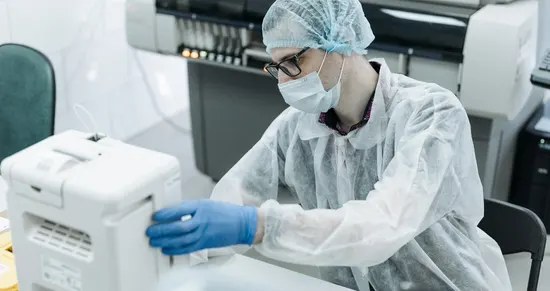In the field of medical device manufacturing, risk management plays a crucial role in ensuring patient safety and regulatory compliance. This guide explores the significance of implementing effective risk management strategies and provides insights into the steps involved in the process. By understanding and addressing potential risks, manufacturers can enhance the quality and reliability of their medical devices, ultimately benefiting both healthcare professionals and patients.
Understand the Regulatory Landscape.
In order to effectively manage risks in medical device manufacturing, it is essential to have a thorough understanding of the regulatory landscape. Different countries and regions have their own regulations and requirements for medical devices, and manufacturers must ensure compliance with these standards.
This includes understanding the specific regulations related to the design, manufacturing, labelling, and post-market surveillance of medical devices. By staying up-to-date with regulatory changes and requirements, manufacturers can proactively address potential risks and ensure that their devices meet the necessary standards for safety and effectiveness.
Identify and Assess Potential Risks.
The first step in effective risk management for medical device manufacturers is to identify and assess potential risks. This involves conducting a comprehensive risk assessment to identify any potential hazards or vulnerabilities in the design, manufacturing, or use of the device. This can include risks related to product failure, patient harm, regulatory non-compliance, and more. Once potential risks are identified, they must be assessed to determine the likelihood and severity of each risk. This allows manufacturers to prioritize risks and allocate resources accordingly to mitigate or eliminate them. By thoroughly identifying and assessing potential risks, manufacturers can take proactive measures to ensure patient safety and regulatory compliance.
Develop Risk Mitigation Strategies.
Once potential risks have been identified and assessed, it is important for medical device manufacturers to develop risk mitigation strategies. These strategies are designed to reduce the likelihood or severity of identified risks and ensure patient safety. Risk mitigation strategies can include implementing design changes to eliminate or minimize potential hazards, improving manufacturing processes to reduce the likelihood of product failure, and implementing quality control measures to ensure regulatory compliance. It is important for manufacturers to regularly review and update their risk mitigation strategies to address any new or emerging risks. By effectively implementing risk mitigation strategies, manufacturers can minimize the potential for harm to patients and maintain compliance with regulatory requirements.
Implement Risk Controls and Monitoring Systems.
Implementing risk controls and monitoring systems is a crucial step in effective risk management for medical device manufacturers. Risk controls are measures put in place to prevent or minimize the occurrence of identified risks. These controls can include design changes, process improvements, and quality control measures, as mentioned earlier. By implementing these controls, manufacturers can reduce the likelihood or severity of potential hazards and ensure the safety of patients using their devices.
Monitoring systems are also essential in risk management. These systems allow manufacturers to track and evaluate the effectiveness of their risk controls and identify any new or emerging risks. Regular monitoring helps ensure that risk mitigation strategies remain up to date and effective in addressing potential hazards. It also allows manufacturers to promptly address any issues or concerns that may arise.
By implementing robust risk controls and monitoring systems, medical device manufacturers can demonstrate their commitment to patient safety and regulatory compliance. These measures not only protect patients but also help maintain the reputation and credibility of the manufacturer in the industry.
Continuously Evaluate and Improve Risk Management Processes.
In order to maintain effective risk management in the medical device manufacturing industry, it is crucial to continuously evaluate and improve risk management processes. This involves regularly reviewing and updating risk assessments, as well as identifying any areas for improvement in risk controls and monitoring systems.
By conducting regular evaluations, manufacturers can identify any gaps or weaknesses in their risk management processes and take proactive measures to address them. This may involve implementing new risk controls, updating existing ones, or enhancing monitoring systems to better track and evaluate risks.
Continuous improvement is essential in risk management as it allows manufacturers to stay ahead of emerging risks and adapt to changing regulatory requirements. It also demonstrates a commitment to ongoing patient safety and regulatory compliance.
By continuously evaluating and improving risk management processes, medical device manufacturers can ensure that their devices are safe and effective for patients, while also maintaining compliance with industry regulations. This not only protects patients but also helps build trust and confidence in the manufacturer’s products and brand.
Benefits of Effective Risk Management
Effective risk management in medical device manufacturing offers numerous benefits that extend across the entire product lifecycle. First and foremost, it enhances patient safety by identifying and mitigating potential hazards before devices reach the market. This proactive approach reduces the likelihood of device failures or adverse events, ultimately protecting end-users.
From a business perspective, strong risk management helps avoid costly recalls, legal liabilities, and reputational damage. Regulatory bodies such as the FDA and European authorities place high importance on documented risk management practices, and demonstrating compliance can ease the approval process and facilitate smoother market access.
Additionally, effective risk management improves product quality and reliability, leading to greater customer satisfaction and trust. It also promotes cross-functional collaboration among design, quality, and regulatory teams, fostering a culture of accountability and continuous improvement.
By systematically managing risks, manufacturers can also make better resource allocation decisions, reduce operational inefficiencies, and support sustainable growth in competitive markets.
Tools and Techniques for Risk Assessment
To effectively manage risks in medical device manufacturing, manufacturers rely on a range of tools and techniques that support a structured approach to risk assessment. One widely used tool is Failure Mode and Effects Analysis (FMEA), which helps identify potential failure points in a product or process and assess their impact. Fault Tree Analysis (FTA) is another technique that uses a top-down approach to trace potential causes of system failures.
Additionally, Hazard Analysis and Critical Control Points (HACCP) and Hazard Analysis and Risk-Based Preventive Controls (HARPC) are useful in identifying biological, chemical, and physical hazards in manufacturing. Risk Priority Number (RPN) scoring is often used to prioritize risks based on severity, occurrence, and detectability.
Software tools also aid in documenting and analyzing risks, tracking changes, and maintaining compliance with standards like ISO 14971, which governs risk management for medical devices. Combining these tools enhances risk visibility, facilitates informed decision-making, and supports continuous improvement.
Conclusion
Risk management is not a one-time activity but a continuous and dynamic process that underpins the entire lifecycle of a medical device—from design and development to post-market surveillance. By proactively identifying, assessing, and mitigating risks, manufacturers can avoid costly recalls, regulatory penalties, and, most importantly, harm to patients. A well-established risk management system also facilitates smoother regulatory approvals, improves operational efficiency, and fosters innovation by enabling the safe introduction of new technologies.
In today’s competitive and highly regulated medical device landscape, implementing effective risk management practices is not just about compliance—it’s a strategic necessity. Manufacturers who prioritize risk management demonstrate accountability, integrity, and a deep commitment to delivering safe and reliable healthcare solutions. As standards evolve and technologies advance, companies must stay agile and continually refine their approach to risk management. Ultimately, a robust risk management framework not only safeguards patient health but also strengthens the long-term success and reputation of the manufacturer.






